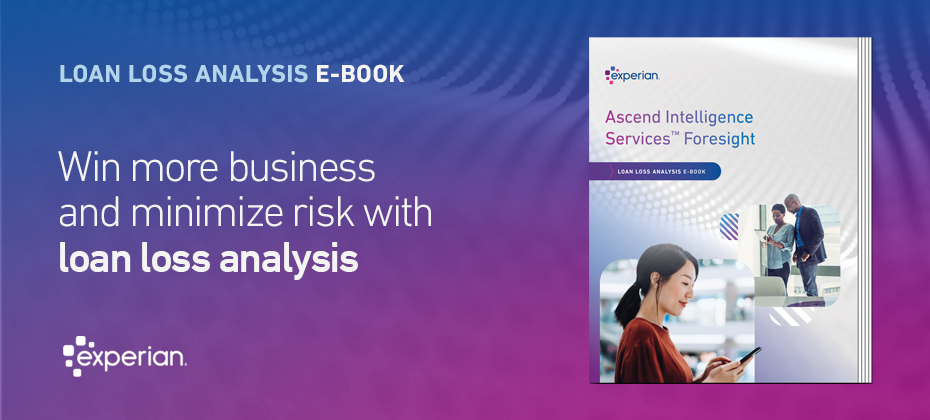
The necessity of integrated feature management
Feature engineering is essential for financial institutions to identify valuable features that provide significant insights and predictive power in various analytics applications. By integrating feature engineering into the feature lifecycle, organizations can convert raw data into more accurate and value-driving features, better manage features for audit purposes and compliance efforts, and build higher-performing models.
At Experian, we have developed a unified feature engineering solution that integrates capabilities across various tools such as the Ascend Analytical Sandbox™ and Ascend Ops™. This comprehensive approach streamlines the feature engineering process, making it more efficient and effective in supporting the complete feature lifecycle.
The challenges in feature engineering
54% of source data used by financial institutions for credit decisioning is not model-building ready.1 Financial institutions need access to high-quality data sources and the ability to modify and combine data to make more profitable data-driven decisions.
In addition, organizations need the necessary tools to solve the myriad of challenges involved with feature engineering. These challenges include:
- Costs: Sourcing and centralizing data can be expensive, and managing and updating data definitions for engineering and analytics is costly.
- Collaboration: Managing a centralized feature library is difficult and often skipped. As AI and analytics teams become more complex across the enterprise, maintaining and governing feature definitions in a centralized library is a must-have.
- Inconsistencies: Calculating features can vary. Different calculations in development and production use cases across the lending lifecycle create model risks and compliance issues.
- Governance risks: Tracking lineage of data definitions is important to avoid elevating risks. Data engineers and scientists need to visualize upstream and downstream impacts as they modify feature definitions.
- Resources: Teams often have skills gaps and require additional expertise, as they may lack an understanding of automated credit reports amongst resources.
- Integration: Evaluating and integrating features into the analytics lifecycle is difficult. This can hinder understanding of the value of models and strategies throughout the lending lifecycle and create friction at deployment.
Experian Feature Builder: a comprehensive solution
Experian Feature Builder is a modern, integrated custom feature solution that combines development, deployment, and management technologies. It accelerates the feature lifecycle through efficient data management and streamlined end-to-end workflows.
Users can access the Ascend Analytical Sandbox for custom feature development and seamless connection to Ascend Ops for deployment and ongoing management.
This integration also significantly enhances compliance and governance by adding a layer of visibility into feature performance, thereby reducing risks through feature monitoring.
Leveraging best-in-class technologies
Feature Builder Notebooks enables users to review feature code in Jupyter Notebooks within Ascend Analytical Sandbox, explore data, execute small sample feature calculations, examine feature distributions, edit feature code, and register to the feature library.
Feature Builder Studio enables users to review and manage features in the feature library, set up feature calculation jobs, and define feature sets for deployment. Users can also add Ascend Ops to deploy to production with little to no friction.
Supporting advanced analytics in consumer credit with integrated feature management
Experian Feature Builder provides a centralized feature library, ultimately improving time to market and decisions to extend credit while managing default and fraud risks.
- Centralized access to data sources used in custom features and intermediation of third-party data sourcing.
- Advanced lineage tracking for a clear view of the history of upstream and downstream feature dependencies for governance purposes.
- Streamlined feature registry for built-in version management and tracking with feature correlations and distributions.
- Key statistical reporting for out-of-the-box data visualizations and monitoring of feature correlations and distributions.
- Comprehensive feature lifecycle support through integration with Ascend Analytical Sandbox for rapid analytics use case iteration and experimentation as well as production-grade execution and deployment with Ascend Ops.
The future of feature engineering
Understanding how essential feature engineering is in producing value-driving features, managing and monitoring features for audit and compliance purposes, and more predictive and high-performing models is pivotal to maintaining competitiveness in the financial services industry.
Experian Feature Builder is the future of feature engineering. With integration for advanced analytics, model development through deployment, and enhanced feature management capabilities supporting compliance and governance, Experian Feature Builder supports the complete feature lifecycle.
To learn more about how Experian Feature Builder can revolutionize your feature engineering, please visit our website and book a demo with your local Experian sales team.
1 Experian research 2023


